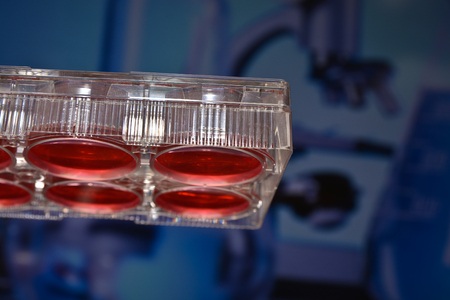A team of researchers at Washington University in St. Louis and the University of Hawaii searching for rare actinomycetes have identified a soil bacterium that produces two drug-like molecules that have been shown to be active against several different cancer cell lines.
Actinobacteria are one of the largest bacterial phyla and make up between 13% and 30% of the soil microbiota and have proven to be an invaluable source of antibiotics. Around two-thirds of the antimicrobials that are in use today in hospitals were originally isolated from actinomycetes, including compounds in virtually all of the important drug classes such as aminoglycosides, β-lactams, tetracyclines, macrolides, and glycopeptides. The actinimycetes have also proven a valuable source of anti-cancer agents.
The increase in drug-resistant strains of bacteria is a global health and development threat. Anti-microbial resistance is making infections much harder to treat and without new classes of antibiotics, infections that were once easy to treat could become untreatable in the future. The search for new antibiotics continues and rare actinomycetes are an underexploited source of new bioactive compounds. While many of these bacteria have been cataloged, large numbers have not been extensively studied, especially if they have been identified as producing a known antibiotic. Around 50% of the actinomycete strains that have been identified have been discarded for this reason and are potentially a rich source of new antimicrobials.
While searching for rare actinomycetes, the researchers identified the soil bacterium Lentzea flaviverrucosa which had unusual biology with unexpected chemistry. The researchers were looking for bacteria that produce piperazyl molecules, which have potential drug-like activities. Lentzea flaviverrucosa produced an unusual peptide that was found to have activity against certain human ovarian cancer, fibrosarcoma, prostate cancer, and leukemia cell lines.
“At a high level, it looked as if one region of the genome might be able to make two different molecules. That’s just a little strange,” said Joshua Blodgett, assistant professor of biology in Arts & Sciences, co-corresponding author of the study. “Usually we think of a gene cluster, groups of genes that are like blueprints for making individual drug-like molecules. But it looked like there was almost too much chemistry predicted within this single cluster.”
The researchers used modern metabolomics and chemical and structural biology techniques and determined that two different bioactive molecules were produced from the supercluster of genes. “Nature is welding two different things together,” said Blodgett. “And, as it turns out, against several different cancer cell lines, when you stick A and B together, it turns into something more potent.”
You can read more about the study in the paper – Discovery of unusual dimeric piperazyl cyclopeptides encoded by a DSM 44664 biosynthetic supercluster – which was recently published in Proceedings of the National Academy of Sciences. DOI: 10.0.4.49/pnas.2117941119
